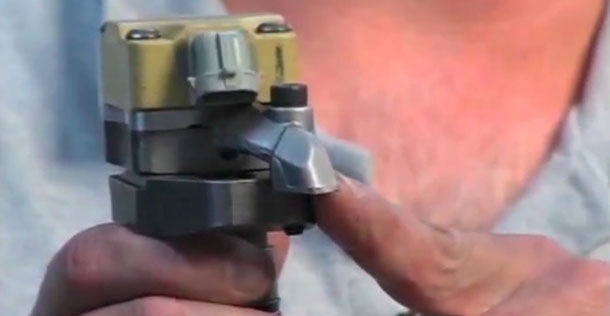Real World: Weighing In on Balancing Work
Whether you’re building a stock engine, a high-revving performance engine or a slow-turning diesel engine, you can’t overlook the importance of balance. Every time the pistons in a reciprocating internal combustion engine change direction, they generate a force. That force is created by the reciprocating and rotating mass of the piston and rod assembly. If

Bearing Straights – Diagnosing Brinelling And Non-Noise Bearing Failures
In the good old days, most serviceable wheel bearings were maintained at least every 25,000 to 30,000 miles during a brake job. During this process, the races, stub axles and cages could be inspected for damage and replaced, if necessary.
Tech Tip: Romeo Is Leaking
Some vehicles equipped with the Romeo-built 4.6L 2V engine may exhibit an engine oil leak or oil weepage from the cylinder head gasket at the right-hand rear or the left-hand front of the engine
Toyota Oil Leak Repair Tips
Traditionally one of the more challenging parts of auto repair, leak detection has come a long way.
Ford 7.3 DIT Powerstroke Tech Tips
In this excerpt, Mike Cleary gives you several quick fixes on various Powerstroke engine problems. Tech tips include 1994 ½ EEC tests, injector spill spouts, camshaft position sensor codes, and dead accelerator pedals. He also covers dual mass flywheels, air cleaner updates, injector replacement procedures, and loose IPR jam nuts, as well as injector performance analyzers, oil consumption, no start relay ratcheting, and much, much more!

Liquid Wrench Redesigns Its Product Line to be More Educational and Effective
Comprehensive Marketing Campaign and How-To Videos Help Automotive Audience Find “A Wrench for Every Job”
Undercover: Bearing the Load
When engineers came up with the idea of putting the wheel speed sensor (WSS) and tone ring inside a sealed wheel bearing hub assembly, it seemed like a great idea. The sealed environment would help protect the sensor and make it less vulnerable to damage or contamination from the outside world.
Undercover: Putting the STOP to Pedal Pulsation
If a customer complains of pedal pulsation or steering wheel shimmy when the brakes are applied, the most common assumption is that heat, wear, corrosion or mechanical stress is causing a variation in braking torque to occur that’s directly proportionate to wheel speed.
Service Advisor: On-Car Rotor Resurfacing: Are You Doing it Right?
One of my favorite pieces of shop equipment is the on-the-car brake lathe. Not only do they resurface the rotors to the center line of the wheel bearings, they speed the job up in some cases – making it a win/win situation.
Tire Talk – Sealing Up Internal Engine Injuries
Adapted from Bob Dowie’s article in ImportCar
